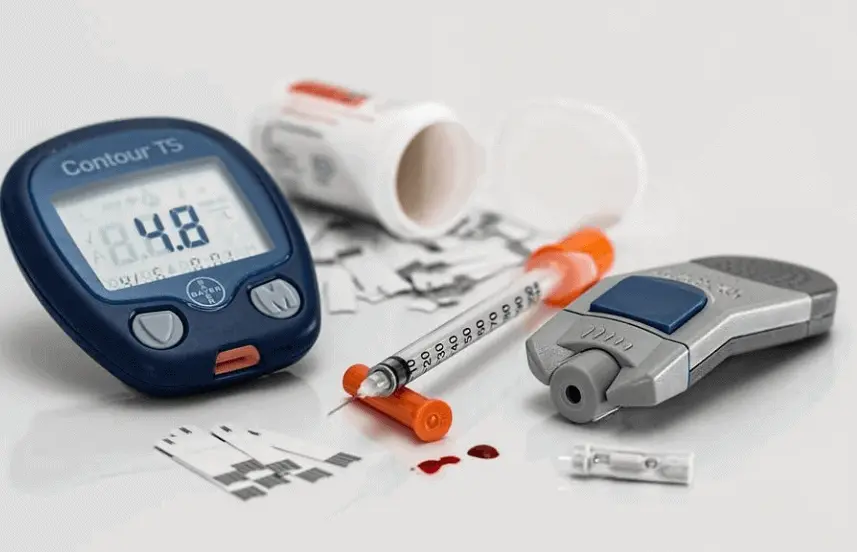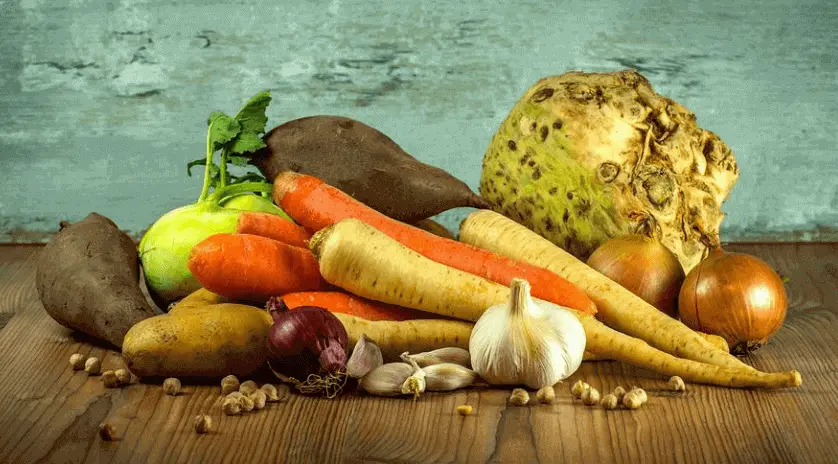Polycystic Ovarian Disease (PCOD) is a hormonal condition in which the ovaries release multiple immature eggs which turn into cysts. PCOD has many symptoms associated with it. The diet and the treatment for PCOD primarily focus on reducing the seriousness of the symptoms.
Nowadays, the polycystic ovarian disease has become one of the most common diseases affecting about one-third of women in the world. Women who are suffering from this condition are said to have irregular or absent periods/menstrual cycles.
As you may observe, they have excessive facial hair. Women with polycystic ovarian disease have trouble conceiving as well. Acne breakouts are one of the problems associated with PCOD. If left untreated, PCOD can lead to many serious systemic problems like diabetes, heart diseases, and endometrial cancer.
Although polycystic ovarian disease is not harmful as such, it increases the risk of occurrence of fertility disorders, insulin resistance, high cholesterol, and diabetes. Therefore it is necessary to manage polycystic ovarian disease.

Diagnosing and managing the disease early can help you control the symptoms and long-term effects. Though PCOS or PCOD has become prevalent among women worldwide, not everyone is well aware of this condition and how to manage the symptoms it causes.
Diet plays a vital role in the life of women with PCOD. A proper diet can help them manage their symptoms in a better way and reduce their risk as well. Some foods can aggravate the symptoms whereas some can be found helpful. A polycystic ovarian disease-friendly diet can have surprising effects.
What causes Polycystic Ovarian Disease:
The exact cause of PCOS is unknown. However, many studies have shown that genetics has a role to play. Another factor that can cause Polycystic ovarian disease is the elevated levels of male sex hormones (androgens) in females.
Females produce female sex hormones and little amount of male sex hormones, the androgens. Imbalance in this, that is increased production of androgens is associated with PCOD. This can prevent the eggs from ovulating.
Acne breakouts and increased facial and body hair in patients with PCOD are due to these elevated levels of androgens.
Importance of diet in PCOD
According to many studies, a sedentary lifestyle and a poor diet are critical reasons for PCOD. Urban women are usually seen to eat more junk food and food which is less nutritious. Insulin resistance associated with this is considered to be playing an important part in causing polycystic ovarian disease.
Diet can cause this disease and worsen it if a balanced diet is not maintained.
When women eat foods with increased starch, sugars, and processed foods regularly, they are at a higher risk of polycystic ovarian disease than women who are observed to include more whole foods with some sort of physical activity in their daily routine.
The elevated blood sugar levels in their body may reduce the body’s potential to absorb the sugars. As there are increased blood sugar levels, the pancreas secretes extra insulin to regulate these elevated sugar levels in your blood.
Eventually, your cells’ response to insulin will drop. Furthermore, this leads to insulin resistance. Ultimately, insulin resistance causes increased androgen secretion.
When you notice any symptoms like absence or irregular periods and a sudden increase in facial hair, you may have developed this polycystic ovarian disease. It is also said that insulin resistance can make it hard to lose weight.
It is high time you start to focus on your diet and incorporate some sort of physical activity into your busy schedule. Being consistent, you will notice the symptoms subside.
Foods to consume:
As you have already seen how impactful diet can be in polycystic ovarian disease, certain foods help you manage PCOD while certain foods you must avoid.
Here is the list of foods you may incorporate into your diet:

- Foods with low GI (glycemic index): Foods with low glycemic index takes more time to get digested than foods with a higher GI. Including whole grains, vegetables, fruits, nuts and seeds, and unprocessed low-carb foods into your, each meal will help you maintain a low glycemic index diet.
- These foods cause a slow release of insulin rather than a sudden/quick release.
- Foods with anti-inflammatory properties: Consuming anti-inflammatory foods can ease symptoms associated with inflammation. Green leafy vegetables, extra virgin olive oil, salmon, and berries are some of the anti-inflammatory foods you can include in your meals.
- Healthy fats: Walnuts, pistachio, almonds, avocado, olive oil, and coconut are healthy fats that need to be added to your diet
- Natural, unprocessed, and unrefined food or food products.
- Greens such as broccoli, spinach, and kale.
- Including foods with high omega-fatty acids (certain fish like salmon, mackerel, and tuna)
- Cinnamon and turmeric are said to be beneficial.
- Dark chocolate (Do not forget to take in moderate amounts!)
Below is the diet chart to follow for PCOD patients:
| BREAKFAST | MID-MEAL | LUNCH | EVENING SNACK | DINNER | |
| MONDAY | Brown rice idli with chutney | Any fruit | 1 cup of veg pulao, 0.5 cup soya chunks curry with curd | 2 wheat bread with peanut butter | 2 roti with 0.5 cups of lady finger curry |
| TUESDAY | 2 roti with 0.5 cups of green peas curry | 0.5 cup of black chana (boiled) | 1 cup of rice, 0.5 cup Dhal, 0.5 cups Palak curry, 0.5 cups of curd | Any fruit | 1 cup of wheat upma, 0.5 cup green beans curry |
| WEDNESDAY | 2 Methi Parata,1 tbsp mint chutney | Any fruit | 1 cup rice, sprouts curry and rasam with buttermilk | Roasted foxnuts | 2 Wheat Dosa, 0.5 cups Bitter guard curry |
| THURSDAY | 1 cup of oats vegetable Upma | Any fruit | 1 cup rice, 0.5 cups Kidney beans curry and 0.5 cup Snake gourd curry | 0.5 cup of black chana (boiled) | 2 Roti, 0.5 cups mixed vegetable curry |
| FRIDAY | Rava dosa with mint chutney | Roasted foxnuts | Vegetable pulao | Walnuts | Besan chilla, salad |
| SATURDAY | Poha and orange juice | Handful peanuts | Vegetable khichdi with curd | Any fruit | 2 roti with low-fat paneer curry |
| SUNDAY | Ragi pancakes with banana | Walnuts | Quinoa vegetable fried rice | Vegetable cutlet | Moong and vegetable khichdi |
Foods to avoid:
Though the Indian diet is well balanced, it is necessary to eliminate certain foods from the diet. Apart from having a variety of whole foods, we also consume a considerable amount of fried and processed foods.
Eating foods made with refined flour or sugars is the worst to eat when trying to manage polycystic ovarian disease.
When your main aim is to lose weight, it is furthermore compulsory to stay away from these foods. Women suffering from the polycystic ovarian disease have to limit or stop eating these foods as it may provoke the symptoms associated with PCOD.
Below is the list of foods you must avoid:
- Fried foods: Fried foods are filled with unhealthy, saturated fats. This will amplify estrogen production.
- Sugars: With all the indulgent desserts in front of you, it gets extremely difficult to resist. However, you must stay away, especially with a sweet tooth as this can be very impactful in managing polycystic ovarian disease.
- Dairy: Dairy products have a hormone that can mimic human insulin. This may lead to elevated sugar levels. Usually, dairy products are infused with antibiotics or hormones that are given to animals. This may interrupt the woman’s hormone system making it hard to manage the polycystic ovarian disease.
- Vegetable oil: Processed vegetable oils are often related to heart diseases, diabetes, obesity, and many other serious conditions. Additionally, these oils can be inflammatory to the ones with PCOS. You can switch to ghee, coconut oil, or olive oil to see a difference.
- Caffeine and alcohol: Caffeine consumption by women with PCOD can spike up stress hormones and anxiety (which also leads to increased insulin levels) whereas alcohol consumption puts them at a higher risk of liver conditions.
- Red meat: There are high cholesterol levels and saturated fats in red meat. Red meat such as mutton, pork, or beef must be avoided. Especially processed meat such as bacon, salami, sausages, and ham which are added with preservatives and have excessive sodium must be completely excluded from your diet.
Exercises for Polycystic Ovarian Syndrome
As we have already mentioned, lack of physical activity and a sedentary lifestyle are the two major contributing factors that can cause PCOS. Also, many women with polycystic ovarian disease struggle with being overweight.
Though not all women are overweight, exercising can help you manage PCOD better irrespective of your weight. Apart from maintaining a proper diet, according to studies, aerobic exercises help reduce insulin resistance and the body mass index (BMI) in women with the polycystic ovarian syndrome.
Here are a few exercises that you can benefit from:
- HIIT: High-intensity interval training which includes tuck jumps, burpees, and mountain climbers. Based on a study that was conducted, women with obesity are seen to enjoy HIIT more than any other exercise.
- Mind-body exercises: Usually, women with polycystic ovarian syndrome are observed to have anxiety and elevated response to stress. Yoga and Pilates can not only help them reduce weight but also manage stress. Managing stress levels is very crucial for women with PCOS as it can be an aggravating factor for their symptoms.
- Strength training: Strength training helps you build healthy bones and muscles. It is a known fact that building muscle can also help you burn calories at rest.
- Steady-state cardio workouts: These moderate to high-intensity exercises can get your heart rate going up and pumping. Riding a bicycle, Zumba, dancing, or walking are different types of cardio you can work on.

- Interval training: This type of training requires you to do various types of exercises in a session and increase your heart rate.
Regardless of the workout you choose, it should be something you enjoy doing daily. Sticking to a routine and being consistent play a key role in seeing the difference you want. Working out with minimum or basic equipment also can make you go a long way. Hiring a trainer or apps like Wryll can be helpful.
Lifestyle practices to manage PCOS
Food and lifestyle play a very huge role in managing Polycystic ovarian disease. Consuming healthy food and maintaining a healthy lifestyle can help you manage and cure PCOD. As the doctors suggest, a healthy diet is necessary but apart from that, a healthy lifestyle is equally essential in women with the polycystic ovarian syndrome.
These practices not only help them lose weight but manage all the symptoms that are associated. Incorporating some sort of exercise routine or physical activity into your everyday life will be beneficial as we know a sedentary lifestyle amplifies the risk of developing and worsening the symptoms of PCOD.
You can begin with basic exercises or choose from the routine mentioned above. Working out for 30 minutes every day for 5 days a week can make quite a noticeable difference in the way you feel.
As per the studies, the mental health of women with PCOD is affected. Working out can help reduce insulin resistance and improve anxiety and depression. It is recommended to go for yoga as it helps in maintaining your hormonal balance and blood sugar.
Apart from maintaining a well-balanced diet and lifestyle, it is important to keep a check on your mental health as well. Meditation and breathing exercises can make you feel at ease and relieve your symptoms associated with anxiety and depression.
Conclusion
PCOD has become very common in our country. 1 in 10 women is seen to be affected by Polycystic ovarian disease. Though PCOD is a lifelong problem, it can be managed and kept under control with a proper diet and the right lifestyle practices.
It is recommended to always consult a doctor before starting a new diet. Under the guidance of a doctor and medications (if necessary to manage symptoms) and a diet will give you positive results.
It is important to understand the importance of eating right, staying physically active and fit, and taking care of your mental health as they are the best practices in maintaining and treating long-term symptoms and complications of Polycystic ovarian disease.
